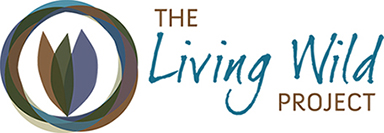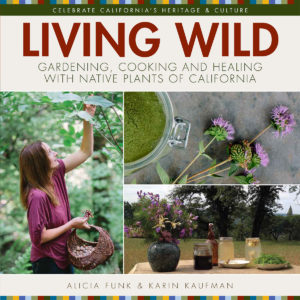Science & Safety
Scientific studies on wild plants
Knowledge that native peoples have gained through hundreds of years of experimentation is a valid source of information and many Native Americans and millions of people around the world still continue to rely upon plant-based
medicine as a primary form of healthcare. Science has reaffirmed the validity of many of these traditional uses and has also confirmed the beneficial effects of numerous plant compounds.
We know from traditional knowledge as well as laboratory analyses that the concentration of chemical compounds in plants can vary significantly by time of year, among closely related species, and even among plants of the same species
grown under different conditions. Any change in these concentrations will affect the potency or strength and efficacy of medicines derived from the plant. In many cases, additional research is needed to determine which species contain the most effective forms of medicinal compounds and how they compare to commercially popular species.
Below is a list of plants discussed in the Living Wild book whose medicinal effectiveness has been supported by both traditional and scientific research. See the Living Wild book for a complete list of references on the studies that support the following information.
COLDS
Cottonwood (Populus trichocarpa): Scientific studies have shown anti-inflammatory and expectorant activity in the buds of Populus species.
Elderberry fruit (Sambucus nigra): Elderberry liquid extracts
and juice concentrates have been clinically tested in patients
with flu symptoms.
Oregon Grape root (Berberis aquifolium): Laboratory studies
have found activity against oral bacteria and antimicrobial
effects.
CONSTIPATION
Coffeeberry bark: Cascara (Frangula purshiana) Efficacy of
Cascara Sagrada bark preparations for relief of constipation
is well-established and supported by clinical data (case
reports and clinical trials).
HEARTH HEALTH
Pine (Pinus pinaster): Extracts from French Maritime Pine (Pinus
pinaster), also called, PBE, have been studied extensively and
clinical trials have found it beneficial in many diseases with
the most promising being in cardiovascular health.
HYPERGLYCEMIA
Serviceberry (Amelanchier alnifolia): In laboratory studies,
compounds in Serviceberry promoted glycogen storage,
which functions as a way to alleviate hyperglycemia.
Wild berry fruits, including Serviceberry (Amelanchier
alnifolia), as well as Chokecherry (Prunus virginiana) and
Elderberry (Sambucus species), were shown to enhance
metabolism and also to inhibit aldose reductase, a marker
linked to diabetes.
MEN’S HEALTH
Fireweed (Chamerion angustifolium): Drink a tea of the dried
and ground upper parts of the plant for Benign prostatic
hyperplasia (BPH) according to several current scientific
studies.
RHEUMATISM AND JOINT INFLAMATION
Willow bark (Salix alba, Salix purpurea, Salix fragilis):
Evidence of efficacy for willow bark extract for relief of lowback-
pain and mild rheumatic conditions is well established
and supported by clinical data.
Yerba Buena (Clinopodium douglasii): In the Philippines, the
congress officially recognized and approved the use of Yerba
Buena for rheumatism pain and has conducted several clinical
studies to substantiate its use. It is taken internally as a tea or
crushed leaves are applied directly to the area of pain.
SKIN CONDITIONS
Cottonwood (Populus trichocarpa): The German Commission E approved the external use of the buds of Populus species for skin injuries, hemorrhoids, frostbite and sunburn.
Ginger, Wild (Asarum caudatum): An extract of the whole
plant showed antifungal activity against nine types of fungi.
Oregon Grape (Berberis aquifolium): Clinical studies have analyzed the external use of Oregon Grape root for psoriasis, including a double-blind, placebo controlled human study of 82 patients which found significant benefit from its use.
STOMACH DISORDERS
Yarrow (Achillea millefolium): The German Commission E and the German Standard License approved the use of Yarrow flowers for mild stomach ailments and loss of appetite.
STRENGTH
Ceanothus (C. integerrimus): An initial, independent laboratory analysis for this publicatin demonstrated a significant quantity of antioxidant catechins present in the leaves.
Fireweed (Chamerion angustifolium): Make tea by grinding
and then steeping the upper parts of the plant for 10
minutes. Drink as an antioxidant and immune system support
according to extensive scientific research.[105, 106] Study results
showed strong antioxidant, antielastase, antityrosinase and
lipoxygenase inhibitor activities and demonstrated high levels
of flavonoid and phenolic compounds, linked to antioxidant
and enzyme inhibitor activity. The extract may inhibit
lipoxygenase, tyrosinase and elastase and function as a
free radical scavenger.
Manzanita (Arctostaphylos viscida): Analysis of the berry for this publication showed an Oxygen Radical Absorbance Capacity (ORAC) level of 14,900, higher than blueberries and pomegranates, however, additional studies are warranted.
Pine (Pinus pinaster): Scientific studies of an extract of the
needles of Pinus densifolia showed strong antioxidant activity
and lab studies of the seed shell extract also demonstrated
anti-tumor and antioxidant activity.
STRESS AND ANXIETY
California Poppy (Eschscholzia californica): Evidence of
efficacy of California Poppy flower preparations as a mild
sedative or sleep aid is based mainly on traditional use,
supported by clinical and non-clinical research.
URINARY TRACT INFECTIONS
Manzanita (Arctostaphylos uva-ursi): The German Commission E, British Herbal Compendium, ESCOP and The German Standard License approved preparations from the dried leaves of uva ursi due to its principal active compound, arbutin, but additional clinical studies should be conducted.
WOUNDS
Fireweed (Chamerion angustifolium): Research on the extract
of the upper plant parts has shown significant antibacterial
and antifungal activities.
Safety issues with wild plants
Medicinal plants have been used for thousands of years to safely treat or relieve a wide variety of ailments and continue to be the primary form of health care for most of the world’s population.
The most critical factor of the safe use of wild collected plants is correct plant identification. Some very safe plant species have look alike species that may be moderately to highly toxic, as is the case with the very safe plant, fennel (Foeniculum
vulgare) and the aptly named look-alike, poison hemlock (Conium maculatum). Plant identification skills can be gained orimproved by taking botany and identification classes, spending time with guide books, experienced botanists, naturalists,or foragers, and taking time to observe plant species over the seasons and in different habitats.
Individuals with special health considerations should use medicinal plants with care and consult a knowledgeable midwife, herbalist, doctor, or other healthcare professional. Although interactions between herbs and drugs are relatively uncommon, they are possible and can have significant health consequences.
This list, by scientific name, summarizes the available guidelines for the safe use of the plants in this book, however more research should be done, especially on native plants not sold commercially.
Achillea millefolium Yarrow: Aerial parts Use with caution in persons with known allergies to the daisy (Asteraceae family),
such as Chamomile, Echinacea, and Calendula.
Arctostaphylos species Manzanita: Leaves
Not recommended for use during pregnancy. Not recommended for use beyond
2 – 3 days at a time. Large, frequent doses can cause intestinal irritation. The
standard dose is an infusion of a teaspoon of dried leaf, 2 – 3 times daily.
Arnica cordifolia Arnica: Aerial parts
Based on A. montana and A. latifolia: For external use only, except under the
supervision of a qualified practitioner. Do not use on broken skin or open
wounds.
Artemisia douglasiana;
Artemisia ludoviciana Mugwort: Aerial parts Not for use in pregnancy. Contact dermatitis has been reported in sensitive
persons after contact with closely related species of Artemisia.
Asarum species Ginger, Wild: Root
Not for use in pregnancy. Compounds in wild ginger are known to cause kidney
damage, although the dose at which this becomes a concern is not known.
Small amounts of wild ginger used occasionally as a spice may be appropriate,
although regular use and larger amounts should be avoided.
Balsamorhiza sagittata Balsamroot: Roots Not recommended for use in pregnancy.
Berberis aquifolium Oregon Grape: Inner bark of
root and stem
Based on information for B. vulgaris: Not for use in pregnancy except under the supervision of a qualified practitioner. Use during lactation is not recommended.
Dicentra formosa Bleeding Heart: Roots Not for use in pregnancy except under the supervision of a qualified practitioner.
Eschscholzia californica Poppy, California: Whole plant
Not for use in pregnancy except under the supervision of a qualified practitioner. “Large” doses may cause nausea. The standard dose listed in this text is 15 – 25 drops of tincture three times daily, or an infusion of 2 – 4 ounces of dried herb.
Helianthus annuus Sunflower, Common: Seeds Allergies to sunflower seeds have been reported.
Heteromeles arbutifolia Toyon: Fruit Cook or dry before consuming.
Iris missouriensis Blue Flag, Western: Rhizomes
Not for use in pregnancy except under the supervision of a qualified practitioner. Not for use in persons with acute liver disease, inflammation of the gall bladder, pancreatic or gastrointestinal disease.
Lupinus albifrons Lupine, Bush: Whole plant For external use only.
Populus species Cottonwood: Resinous leaf buds Hypersensitivity and allergic skin reactions to the closely related balsam poplar
(Populus balsamifera L. subspecies balsamifera) have been reported.
Prunus virginiana
subspecies demissa Chokecherry: Dried bark
Based on P. serotina: Cherry Bark should be completely dried before use as the drying process helps to reduce the potential toxicity of cyanide-based compounds present in small amounts in the bark.
Quercus species Oak: Bark Frequent consumption may cause stomach irritation due to the tannin content of the bark.
Frangula purshiana Coffeeberry: Dried bark
Not for use in pregnancy or lactation. Not for use beyond 1 week without
supervision of a medical practitioner. Do not use this product if you have
abdominal pain or diarrhea. Not for use in children under 12.[83, 124] Typically,a dose of powdered bark is 0.3 – 1 g in a single dose or an infusion made from 1.5 – 2 g of bark in 150 ml of water.
Sambucus nigra subspecies caerulea Elderflower: Raw fruits, flowers
The unripe fruits, leaves, and branches contain hydrocyanic acid and should
not be consumed. Once dried or cooked, the fruits and flowers may be safely consumed.




